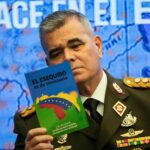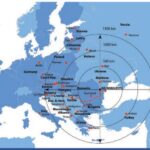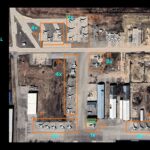The Islamic State organization has been on the losing side for the last year in Syria and Iraq. Pentagon estimated in August that over 25,000 ISIS operators have been killed in the last 11 months, with additional estimate of 20,000 killed in the year before. General MacFarland said estimates for the overall remaining strength of ISIS vary from about 15,000 to 30,000 but said the jihadists are having increasing difficulties replenishing their ranks. Besides heavy casualties, the big losses were also accounted as territory, funds, maneuverability and oil industry.
Emphasizing on the success rate in the Near East, Iraqis announced their plan to take-on Mosul later this year. Mosul is the 2nd biggest Iraqi city and the biggest city under the control of Da’esh. If in 2014 we could look at the maps of Syria and Iraq and imagined a ecography that showed an ever spreading cancer, starting with late-2015, the region could breathe easier thanks to the frequent successes of the Iraqi Forces and to the fast-shifting dynamic in Syria. Officials also estimate ISIS has lost 25,000 square kilometers (9,650 square miles) of the territory it once held in Iraq and Syria, or about 50% and 20% respectively in each country.
The Northern Front
In November 2015, Kurdistan’s Regional Government (KRG) very own Pashmerga together with Allies have liberated the Yazidi city of Sinjar. Sitting in Iraq’s north-west, the city is a living example of “Islamic State’s” cruelty after the Kurds discovered mass graves of 2,000-5,000 Yazidis (Sinjar massacre) that also had effects such as huge displacements, besides the horrific sex slavery that the Jihadists impose on Yazidi women.

Kurdish fighters look on as smoke billows from Sinjar, in northern Iraq, during an operation, backed by U.S.-led strikes, against the Islamic State group on Thursday. Safin Hamed/AFP/Getty Images
The important and morale-boosting win from the small town of Nieneveh Province in Iraq had an operational, and some say, an even strategic value. By moving the frontline further to Syria, the Kurds managed to cut the main supply corridor from Raqqa (ISIS self-declared capital) to Mosul (2nd biggest city of Iraq) as well as many other secondary cross-border routes. The Kurds made  substantial progress in deleting the fastest Mosul-Raqqa connection for the Jihadists, especially after they’ve sealed the border crossing from Al-Hasakah to northern Iraq, with Kurdish control on each side through YPG, respectively Pashmerga. While the situation in Nieneveh province almost brought the Pashmerga into a turf war with the outlawed PKK in Sinjar, and revealed tensions with Syrian Kurds of YPG regarding the border, the situation was mainly positive for the overall anti-ISIS campaign.
substantial progress in deleting the fastest Mosul-Raqqa connection for the Jihadists, especially after they’ve sealed the border crossing from Al-Hasakah to northern Iraq, with Kurdish control on each side through YPG, respectively Pashmerga. While the situation in Nieneveh province almost brought the Pashmerga into a turf war with the outlawed PKK in Sinjar, and revealed tensions with Syrian Kurds of YPG regarding the border, the situation was mainly positive for the overall anti-ISIS campaign.
Adding to the Kurdish dynamic, Turkey sent troops to its military base near Mosul to train with the Pashmerga but in fact to contain possible closer ties between Iraqi and Syrian Kurds. Funny how the Kurds reestablished a part of the Iraq-Syria border, while their aspiration is to diminish borders between them.
Anbar – the “hellbead” of Sunni Insurgency
On the Western Front, in the Sunni majority Anbar Province things were much expected to be difficult and delicate. Since the G. W. Bush launched the War on Terror and Invaded Iraq, Anbar has been the meltdown of fanatical extremism blended with strategic thinking of ex-Ba’athists. A Sunni stronghold in the Shia-majority country of Iraq, Anbar has refused governance and cooperation since 2004. The now powerless Sunnis (soldiers, high ranking officers, operatives and politicians) from Saddam Hussein’s so called “Secular” government were left without pensions and sent home after the Coalition Provisional Authority has settled-in. This made the Sunni Ba’athist to craft unexpected alliances with Sunni extremists, largely concentrated in the Sunni area of Anbar. CPA was succeeded by the Provisional Government and then by the Transnational, followed by the democratically elected Cabinets in 2005. The Anbar region’s voter turnout was 2% in the January 2005 elections, a reality that threatened the legitimacy of the election. Furthermore the political turn-out in the National Assembly signaled that the Shi’a have surfaced to a hegemony in the state’s leadership. – Something that the isolated Sunnis in Anbar would not accept. The Shi’a hegemony also permitted Iran to drag Iraq into its geopolitical orbit and operate freely in the country.
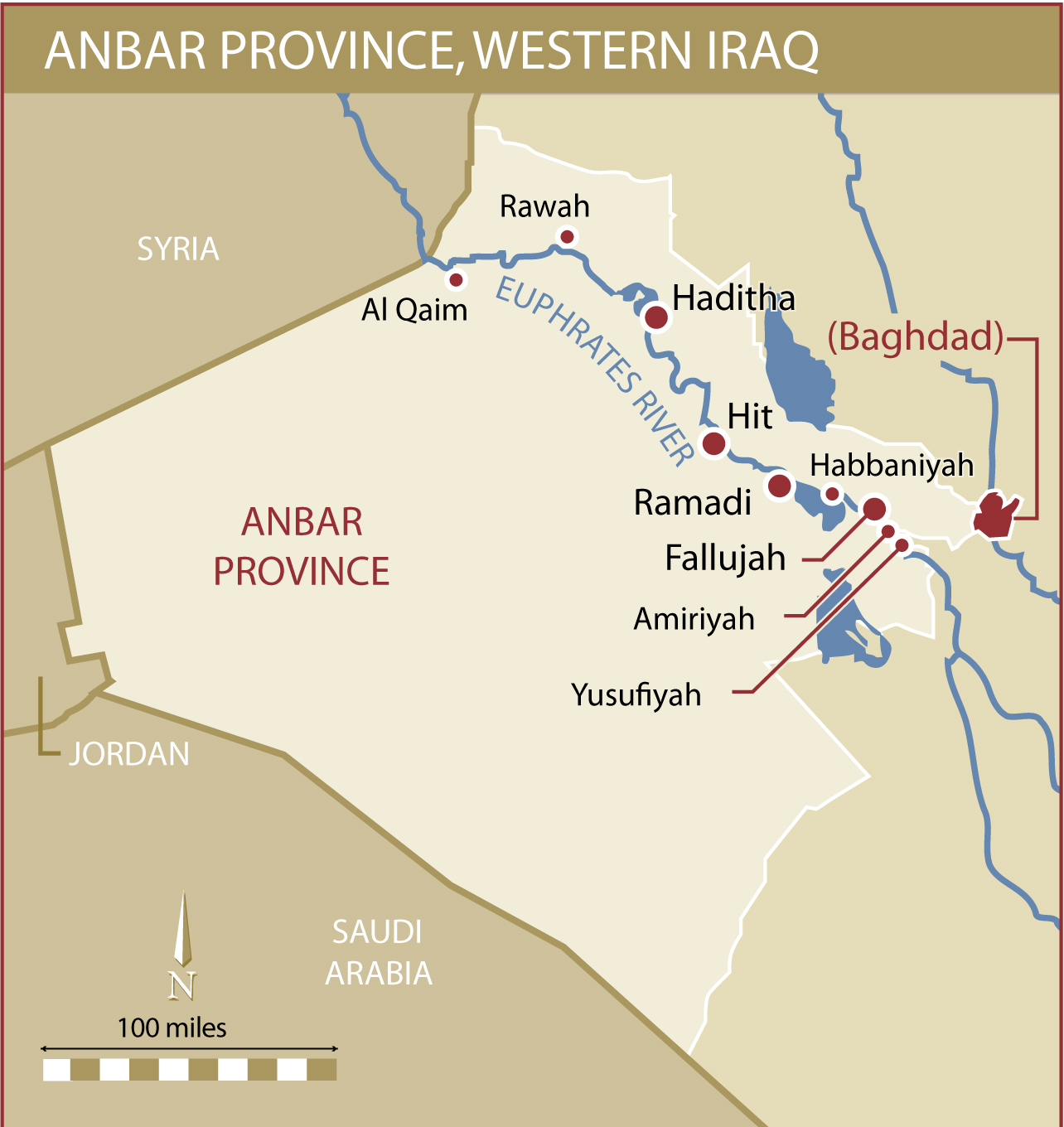
With ISIS building on what Al-Qaeda in Iraq started, they enjoyed significant successf in Anbar; firmly holding urban areas and establishing control over widespread terrain through alliances with Sunni tribal leaders. But in 2015, ISIS was advancing more towards Baghdad and was close in establishing a direct supply corridor from its self-declared capital in Raqqa (Syria) – via Mayadin, Bukamal, Deir al-Zor – to Ramadi (Anbar capital, Iraq), just 100 km from Baghdad. It became alarmingly urgent for Iraq to address the Anbar situation before Baghdad falls.
The Anbar front was chosen from early 2015, despite the fact that the US and the Kurds advised to launch a major offensive to the North, where the oil fields are located and occupied by Da’esh – being their main source of income. Therefore, the Iraqis had clear objectives in Anbar: capturing Ramadi and Fallujah and deny ISIS safe haven there. One was Al-Qaeda’s in Iraq self-declared capital (Ramadi), while the other (Fallujah) hosted one of the most important battles in the Iraqi War. The Battle of Ramadi has evidenced back in 2004 that the US is confronting an Islamic insurgency that is in fact more powerful than the Ba’athist resistance; a theory in denial until then.
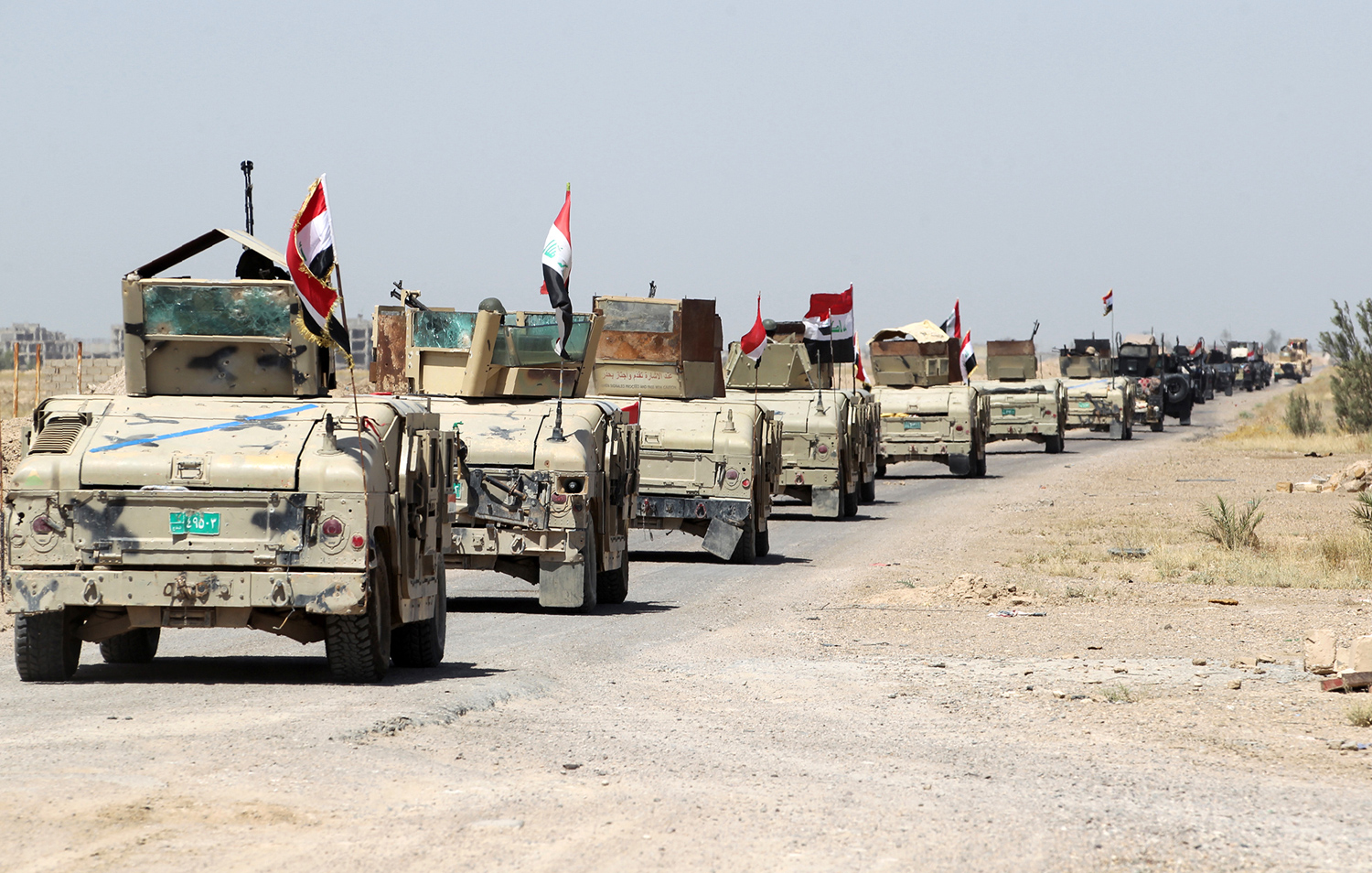
Iraqi forces on May 22-23 launched a vast offensive aimed at retaking the IS bastion of Fallujah, a city only 50 kilometres (30 miles) west of Baghdad that was the first to fall out of government control in 2014. / AFP / AHMAD AL-RUBAYE (Photo credit should read AHMAD AL-RUBAYE/AFP/Getty Images)
The Shi’a majority Iraqi Army accompanied by Shiite militias was heading towards a region with a well-armed population and an overall hostile social-cultural environment. A violent counter-reaction to Shiite advancements, regardless of them being Governmental Forces of militias from Basra, was expected. But with Baghdad managing to grab support from both ends: US, NATO and Iran, they’ve enjoyed plenty of air support and tactical guidance on the ground.
The Iraqi war against ISIS bumped into its own internal struggles, strictly related to geopolitics and sectarian tensions. With Iran getting more involved in Iraq, by sending even ground troops, non-state actors and military hardware, the US was witnessing its “baby” being stolen away. Even so, Washington continued aiding the Iraqi offensive in Anbar but was concentrating more on efforts with Pashmerga in the north.
Ramadi and Fallujah: Averting a disaster
The retaking of Ramadi, started with November 2015 was a done by the following tactics:
- Completely surrounding the city, culminated with the capture of the North-Western Palestine Bridge.
- Haditha, Asad Base and roads to Hit, were taken under Iraqi control.
- Cutting all supply lines between Ramadi and external Da’esh zones.
- Continuously bombing by US Air Force.
- Air drops advised (flyers) inhabitants of Ramadi to leave.
- Humanitarian corridor facilitated civilian escape from the city while Ramadi was under a siege to squeeze Da’esh out of supplies.

Applying classic encirclement tactics combined with attrition and heavy air strikes facilitated a slow, disputed entrance of Iraqi soldiers in the city. By early February the city was liberated from Da’esh control but still active in booby traps and IEDs. Ramadi was also largely destroyed by the offensive which made it half-a-win, as it happened in Kobane, Syria (2014).

Ramadi after the offensive.
After the controversial win in Ramadi, Iraqis were advancing towards Fallujah, the “hotbed” of Sunni insurgency in Iraq, the first city to be captured by ISIS back in January 2014. An assault on Fallujah, building up towards the success rate in Anbar would be a victory for Iraq as a Project/State. The Iraqi Army published a statement on 22 May 2016, and asked residents of the battlefield to leave the area through secured routes. But while the city was sourrounded since late 2015, Da’esh has managed to prevent residents from leaving – by shooting them, or IED’s planted on roads. The Iraqi Army also said that local residents who could not move should raise white flags on top of their roofs.

Iranians planning the strategy on Fallujah
While Iran’s Quds Force commander Qassem Suleimani and other PMF commanders were planning tactics to liberate Fallujah, the US was preparing to send ground troops to help with the operation. During the Iraqi War, Fallujah was the scene of the most bloodiest and complex fights between Al-Qaeda and US Marines, killing 100 US soldiers in an battle that was both urban warfare and insurgency styled.
Using synchronized breaches into the city, the Iraqis alongside Iranian Quds and Shi’a Popular Mobilization Fronts advanced under air cover provided by US led Coalition. They managed to take Fallujah, neighborhood by neighborhood, village by village, so that in late June 2016, to be declared free.
Standing over the rubles of the pricey liberation of Ramadi and Fallujah, it became clear. The Sunni insurgency heartland, the first to be abandoned by Baghdad when ISIS emerged, was now liberated by the Army. With a satisfactory post-liberation social response, there’s proof the Anbar Awakening from 2007 was not an isolated case, but rather a possible re-occurring tendency. Looking at how Ramadi and Fallujah stand, they were just 100, respectively 60 km far from Baghdad. A disaster in the making was averted and the battle for the Iraq-State project was won.
The long term challenge would be to stabilize and pacify the region while balancing external influences from Iran. But until then, amidst recent developments, Baghdad eyes Mosul.

Fallujah strategy
Realistic Planning: Taking Mosul
Mosul is located on the west bank of the Tigris river, and at 400 km north-east of Baghdad and is the 2nd biggest Iraqi city. Mosul fell to Islamic State in June 2014 when Iraqi security forces, riddled with corruption and sectarianism despite billions of dollars in U.S. aid, dropped their weapons and fled from the insurgents.
With a late 2015 Pashmerga cutting of the supply corridors between Raqqa and Mosul, later complemented by liberation of Ramadi and Fallujah, that denied ISIS to build an advanced governance and supply network; Iraq began eying Mosul. The Kurds, in all this time, maintained pressure in the north and even had incursions in Mosul’s countryside alongside US Special Operators; while Iraq’s recapture over the summer of Qayyara airbase and surrounding areas along the Tigris river 60 km (nearly 40 miles) south of Mosul. With such a combo, commanders say the offensive could start by late October. An offensive on Mosul would most probably involve Kurdish factions, Yazidi groups, Assyriac , the traditional Shi’a militias alongside Iraqi Security Forces, backed by US air support (and most probably: ground troops) and Iranian Quds Forces.
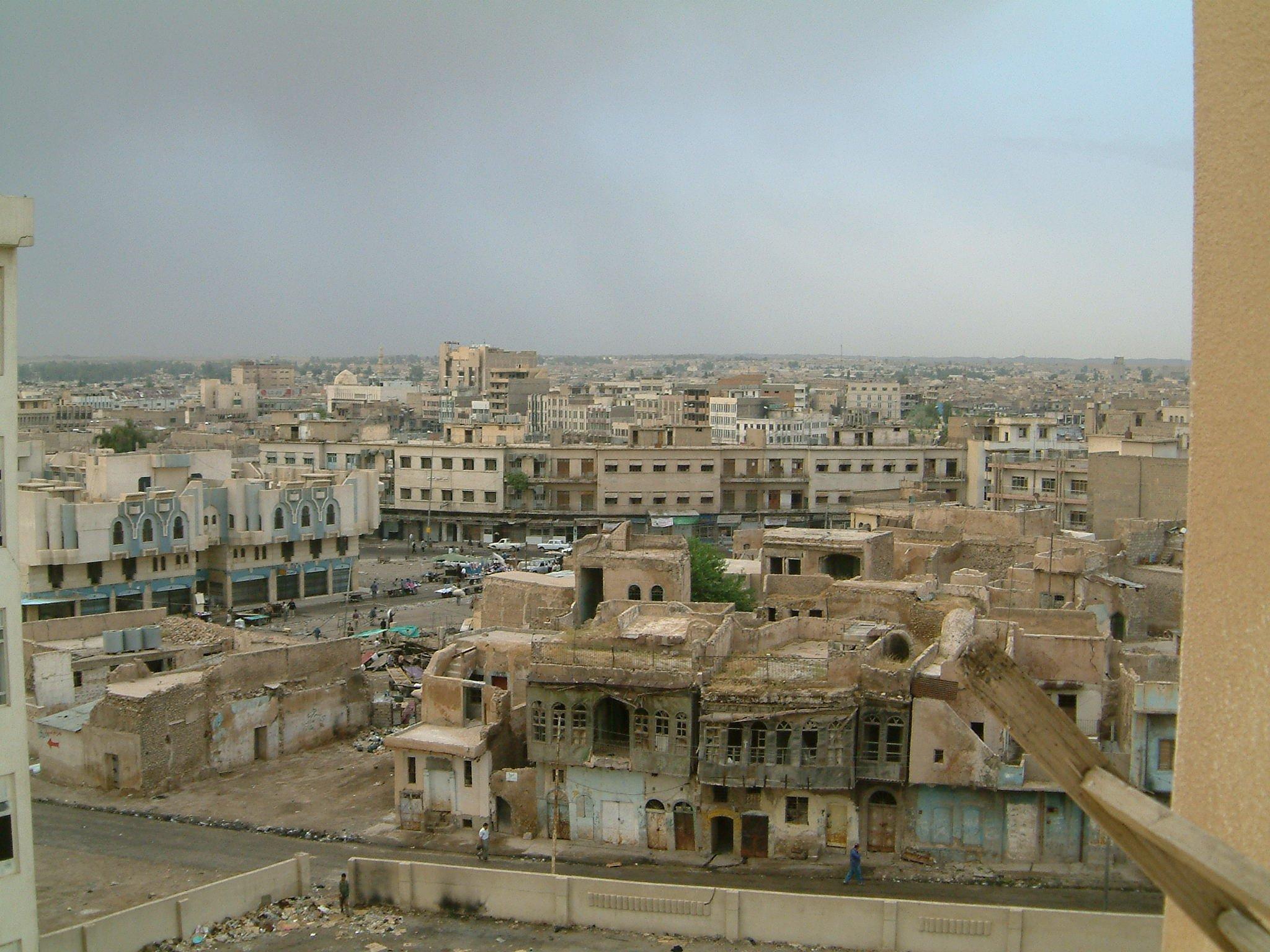
Mosul
U.S. forces based in Iraq have risen from 4,000 to 4,460. The additional forces are assisting with the “tremendous amount of work going on” to set the pre-battle conditions to defeat the estimated 3,000 to 4,500 Islamic State group fighters believed to be in Mosul, Col. John Dorrian, the Baghdad-based spokesman for Operation Inherent Resolve told reporters at the Pentagon.
The additional U.S. forces are part of the 101st Airborne Division, 2nd Brigade Combat Team out of Fort Campbell in Kentucky. Their deployment was announced in August to help establish a base of operations at Qayyarah Air Field West; a location to be used by Iraqis for the Mosul operation.
Lieutenant General Vincent Stewart, Director of the U.S. Defense Intelligence Agency, said on Thursday he expected the Mosul operation could unfold in the next two or three months but that it
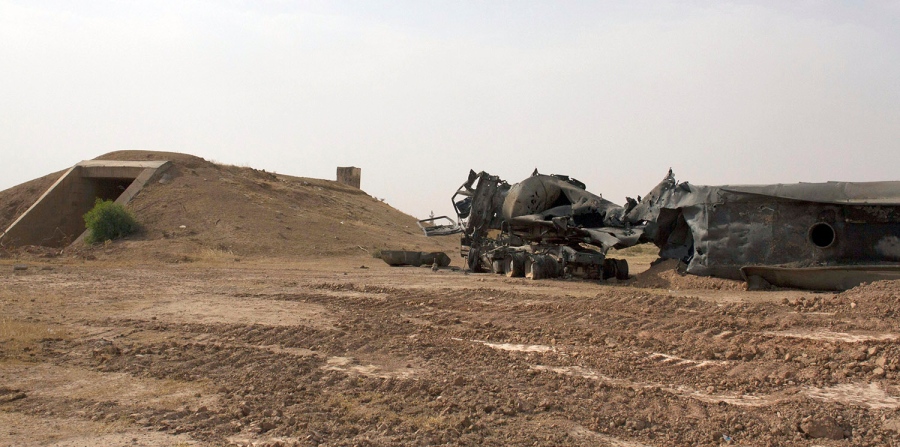
Qayyarah Air Field to be used as a launching point towards Mosul.
would be long and difficult.
“Urban warfighting is not easy and this is a large city that has had at least two years to prepare to defend its position … It’s going to be a multi-dimensional fight,” Stewart said at a national security summit in Washington.
This announcement comes just days after Turkish President Erdogan has stated that he will support any US-backed effort of retaking ISIS de-facto capital of Raqqa (Syria). Even though, from personal estimates, a Raqqa offensive could kick-off only in 2017, a Mosul operation is achievable in this year. While strategic restraint over enthusiasm is advisable, the fight for Mosul will be anyhow a bloody, difficult but major battle.
Taking all the developments into consideration is clear that the tide has turned and ISIS is on its hells. With their major urban conglomerates, Raqqa and Mosul, under realistically operational planning, the conventional war in Iraq against the Hybrid Para-State, Da’esh, could find its end sooner rather than later. But from the start, we knew, that the anti-ISIS effort will stretch over long years of conventional fighting, possibly followed by more years of a more “traditional” insurgency.
BONUS: Visual example of how ISIS is losing
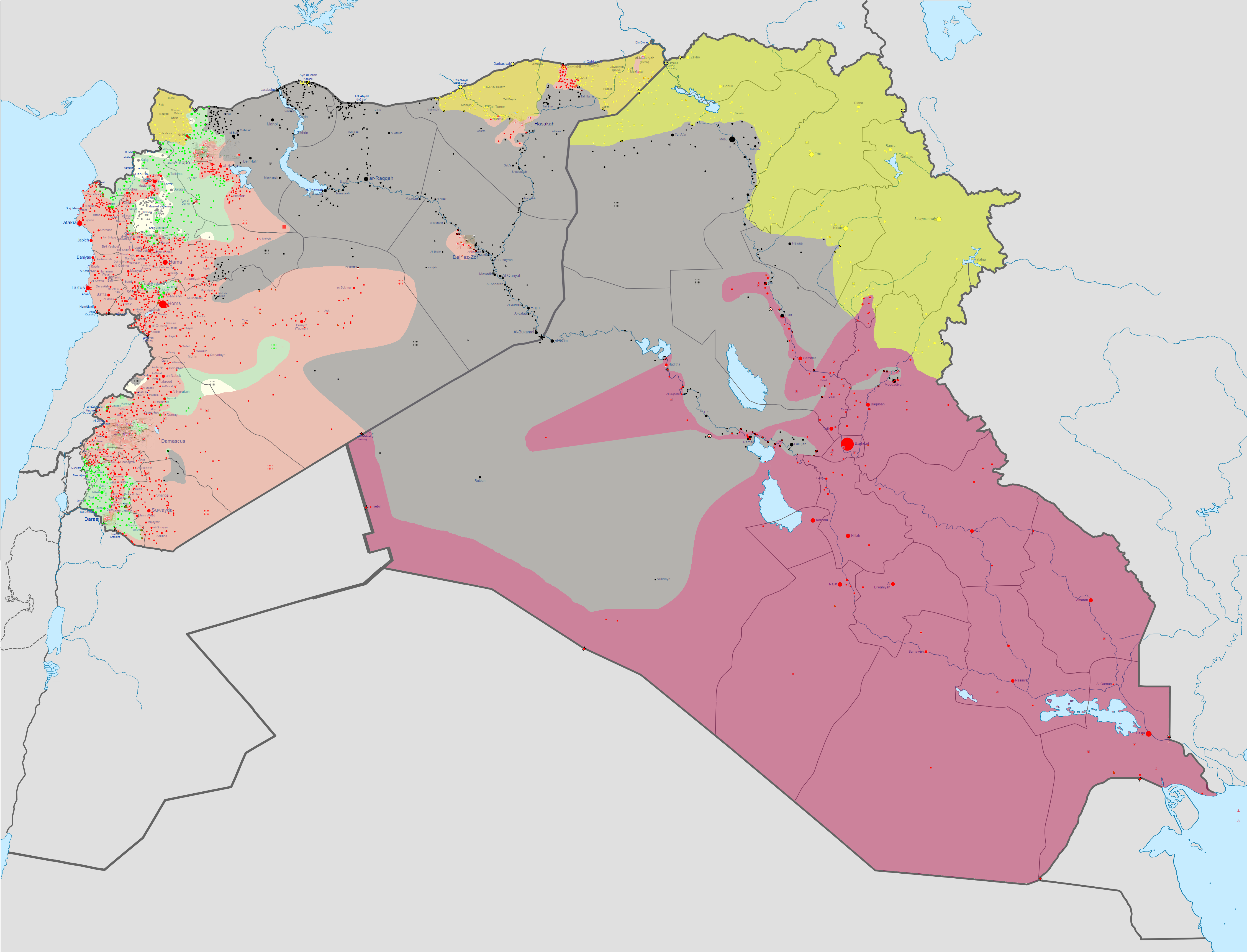
Situation in Syria and Iraq as of January 2nd 2015
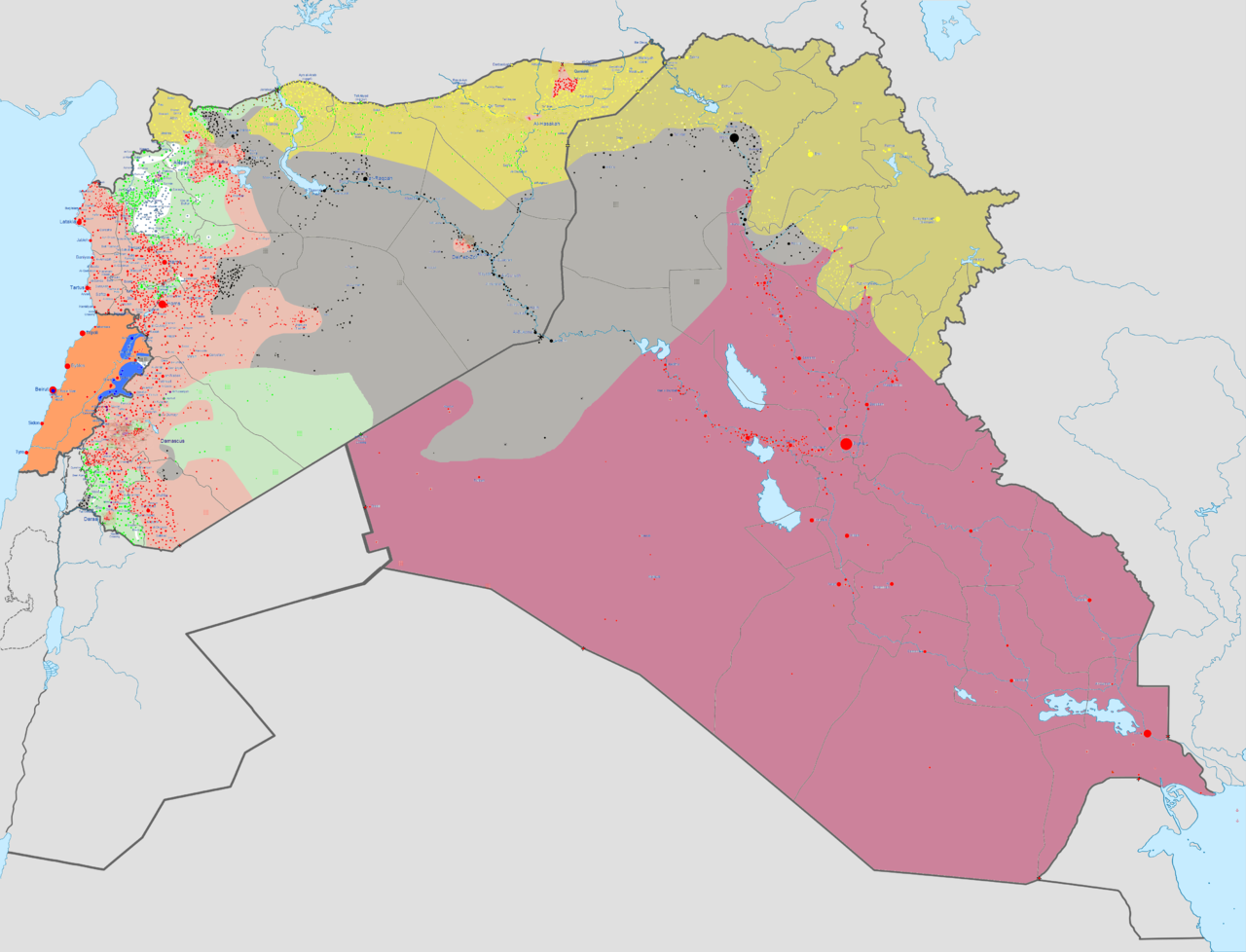
Situation in Syria and Iraq as of September 3rd 2016
by I. V. Șutea
Bliography
“45,000 ISIS Fighters Killed in Past Two Years: US General.” https://ara.tv/rz54m.
“Can Shia Militias Be Integrated into the Iraqi Army?” https://www.aljazeera.com/programmes/insidestory/2016/07/shia-militias-integrated-iraqi-army-160728180931271.html.
CNN, Moni Basu. “The Long, Sad Story of Falluja.” CNN. https://www.cnn.com/2016/06/03/world/iraq-falluja-sad-history/index.html.
“Farsnews.” https://en.farsnews.com/imgrep.aspx?nn=13950304001274.
Gordon, Michael R. “Kurds, Backed by U.S. Air Power, Try to Regain Sinjar From ISIS.” The New York Times,://www.nytimes.com/2015/11/12/world/middleeast/isis-iraq-syria.html.
Habib, Mustafa. “Why Can’t The Iraqi Army Win In Anbar’s Extremist Capital?” Niqash. https://www.niqash.org/en/articles/security/5210/.
“How Iraq Recaptured Ramadi and Why It Matters.” https://www.aljazeera.com/indepth/opinion/2016/01/iraq-recaptured-ramadi-matters-160103061219164.html.
“Iraqi Forces Prepare Offensive on IS-Held Falluja | Top News | Reuters.” https://ca.reuters.com/article/topNews/idCAKCN0YD0AM.
“Iraq’s Shia Militias Asked to Fight ISIL in Ramadi – Al Jazeera English.” https://www.aljazeera.com/news/2015/05/iraq-shia-militias-asked-fight-isil-ramadi-150518081142550.html.
“Lessons from the Liberation of Sinjar.” War on the Rocks, November 25, 2015. https://warontherocks.com/2015/11/lessons-from-the-liberation-of-sinjar/.
Malas, Nour. “Iraqi City of Mosul Transformed a Year After Islamic State Capture.” Wall Street Journal, June 9, 2015, sec. World. https://www.wsj.com/articles/iraqi-city-of-mosul-transformed-a-year-after-islamic-state-capture-1433888626.
MarineCorpsTimes. “Commander-Details-Us-Marines-Role-Taking-Back-Ramadi-Isis.” MarineCorpsTimes. https://www.marinecorpstimes.com/story/military/2016/05/13/commander-details-us-marines-role-taking-back-ramadi-isis/84329418/.
Taylor, Alan. “The Battle for Fallujah, Iraq – The Atlantic.” https://www.theatlantic.com/photo/2016/06/the-battle-for-fallujah-iraq/487859/.
“US Sends More Troops to Iraq to Prepare for Mosul Battle.” Stars and Stripes. https://www.stripes.com/news/us-sends-more-troops-to-iraq-to-prepare-for-mosul-battle-1.427978.
Founder of T-Intelligence. OSINT analyst & instructor, with experience in defense intelligence (private sector), armed conflicts, and geopolitical flashpoints.

